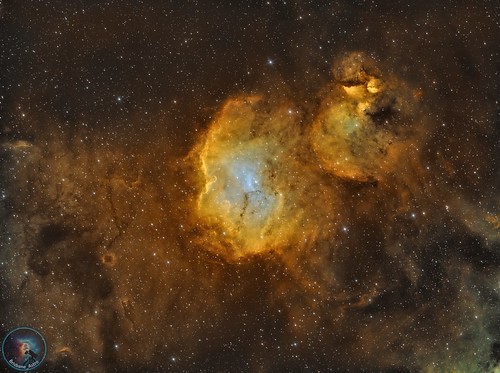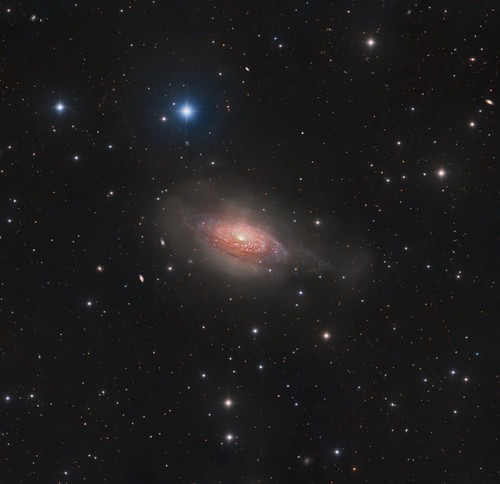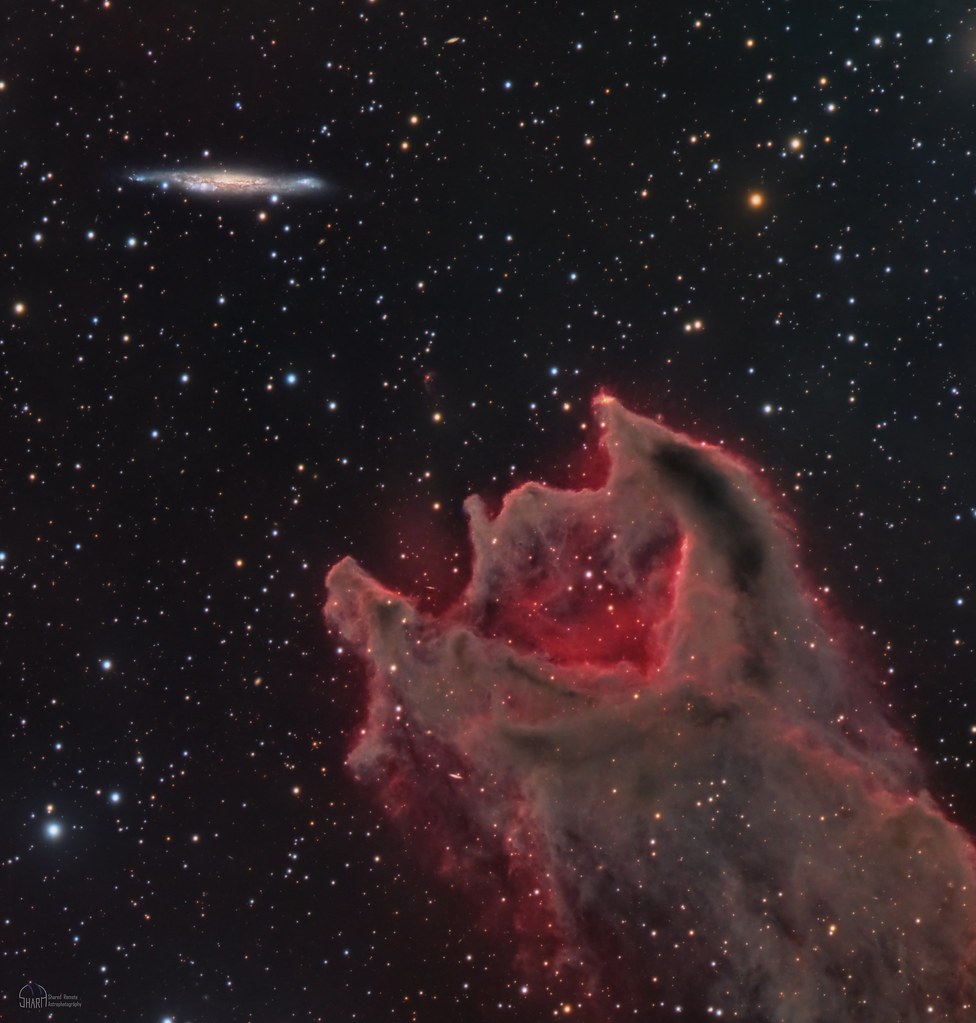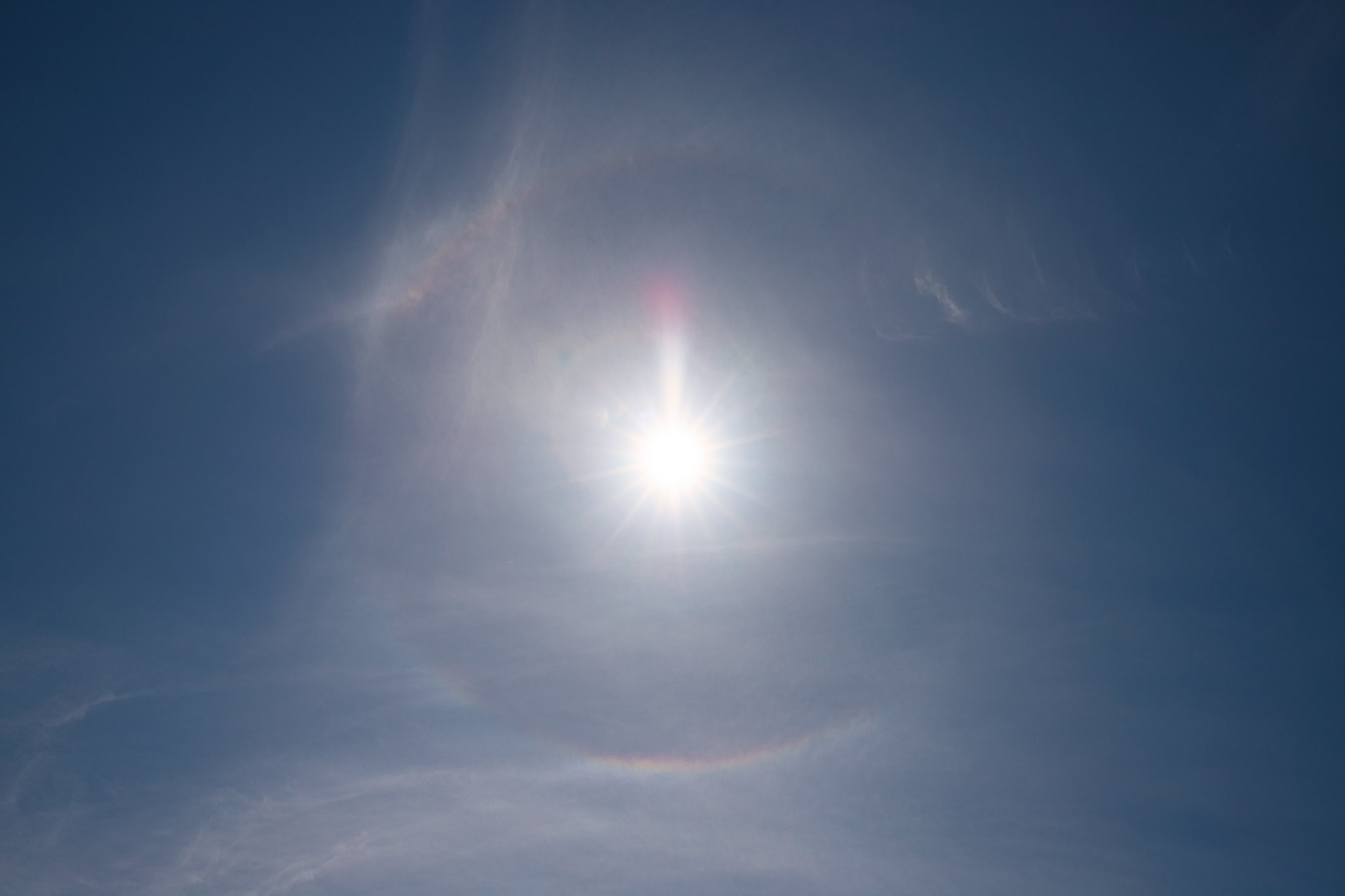 The Cosmic Web
The Cosmic Web by
Rolf Wahl Olsen, on Flickr
The Large-Scale Structure of the Universe
Of all my images I feel that this one is the most profound: A relatively empty looking field in the southern constellation Fornax, about the size of the full Moon. This area of the sky is devoid of most bright stars, and contains almost no obscuring interstellar dust or hydrogen emission. It is therefore a window out into the deepest reaches of the observable Universe. It is also the location of the famous Hubble Ultra Deep Field and several other HST studies over the last couple of decades.
With around 60 hours of exposure the limiting magnitude is close to 25.0 which is 25 million times fainter than the dimmest naked-eye stars.
At this depth, the background is filled with tens of thousands of distant galaxies. But to see them properly, we must go on a journey - outside of our own Milky Way galaxy. To filter the many background galaxies from the foreground stars I used Gaia DR3 data to identify and remove all stars in the image, and thus revealing just the extragalactic background.
Every single point of light in the resulting image is a galaxy!
There are over 20,000 distant galaxies in this single image. With redshifts of up to z=3.354 the farthest are nearly 12 billion light years away. At that distance the field of view spans an incredible 112 x 147 million light years.
It is clearly noticeable that the galaxies are not distributed randomly. Instead, galaxy groups and clusters form long filaments with massive voids in between. This vast foam-like structure is known as the Cosmic Web; the large-scale structure of the Universe.
Tiny primordial fluctuations in the dark matter distribution immediately after the Big Bang gave rise to these immense structures, created and shaped by gravity. Their origins are imprinted on the cosmic microwave background observed by the Planck satellite - the oldest light in the Universe.
See this image
https://www.rolfolsenastrophotography.c ... /i-FNxSNwN for a version including the foreground stars.
Image Processing
After the raw data was calibrated and combined in PixInsight, the foreground stars were identified using a custom catalogue of sources in the field-of-view generated from Gaia DR3.
PixInsight was used to annotate the image and labelling all stellar sources. A manual inspection then identified a further handful of sources as being obviously extraglactic and these were removed from the custom catalogue.
A special starmask purely consisting of the foreground stars was then made using the custom catalog data.
A starless image of the entire field was created by applying StarNet processs in PixInsight. This removed all point sources in the image, including all the faint background galaxies, so to create an image that reveals only the distant extragalactic background objects the starless image was then re-combined with the original image but using the Gaia data starmask. The result is a starless image showing only extragalctic sources!
Cross-checking against the available Hubble Ultra Deep Field catalogues using VizieR, approximately 190 galaxies were identified within the HUDF catalogued area. Assuming the HUDF to be representative of the entire image, and indeed the entire sky, this can be extrapolated to over 23,000 galaxies in this field alone, and over 2.5 billion galaxies visible in the entire sky at this depth.
Code: Select all
Resolution ............... 0.765 arcsec/px
Rotation ................. 178.892 deg
Reference system ......... ICRS
Geodetic coordinates ..... 174 45 00 E 36 51 00 N 240 m
Focal distance ........... 1456.58 mm
Pixel size ............... 5.40 um
Field of view ............ 42' 23.3" x 31' 54.8"
Image center ............. RA: 3 32 39.046 Dec: -27 47 28.96
Image bounds:
top-left .............. RA: 3 31 04.405 Dec: -28 03 48.48
top-right ............. RA: 3 34 16.452 Dec: -28 03 00.18
bottom-left ........... RA: 3 31 02.103 Dec: -27 31 53.49
bottom-right .......... RA: 3 34 13.213 Dec: -27 31 05.42
Date: Nov 2021 - Feb 2022
Exposure: LRGB: 2850:250:225:225 mins, total 59 hours 10 mins @ -25C
Telescope: Homebuilt 12.5" f/4 Serrurier Truss Newtonian
Camera: QSI 683wsg with Lodestar guider
Filters: Astrodon LRGB E-Series Gen 2
Taken from my observatory in Auckland, New Zealand

















